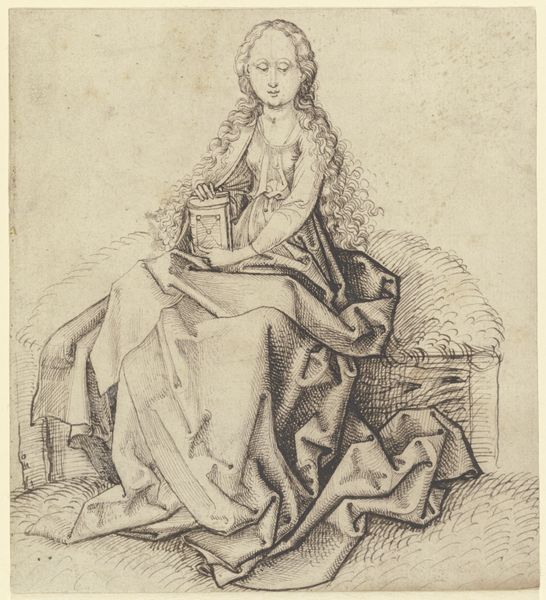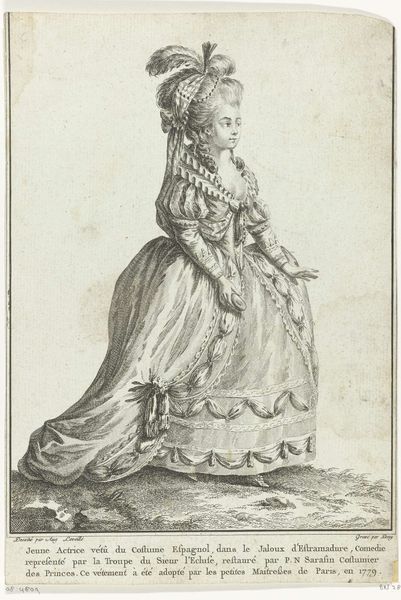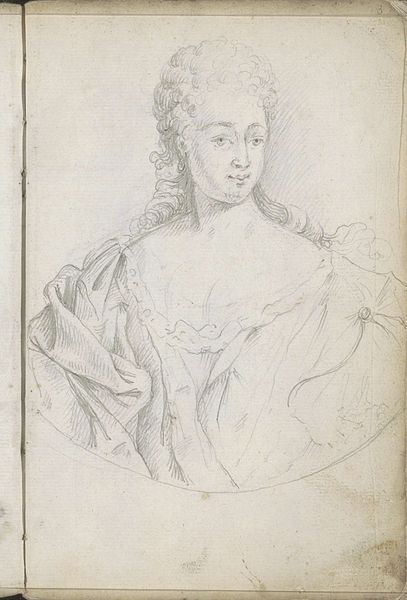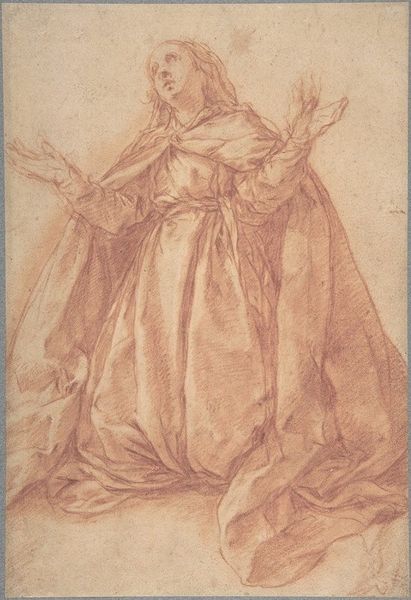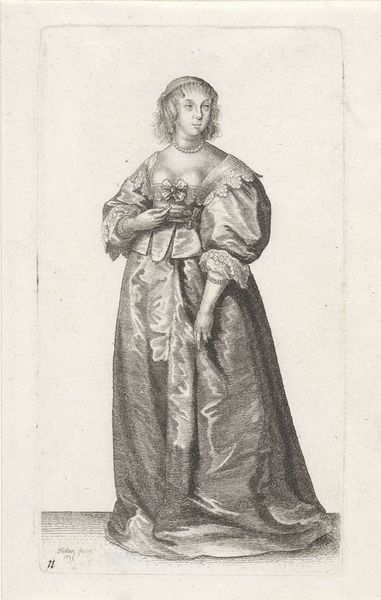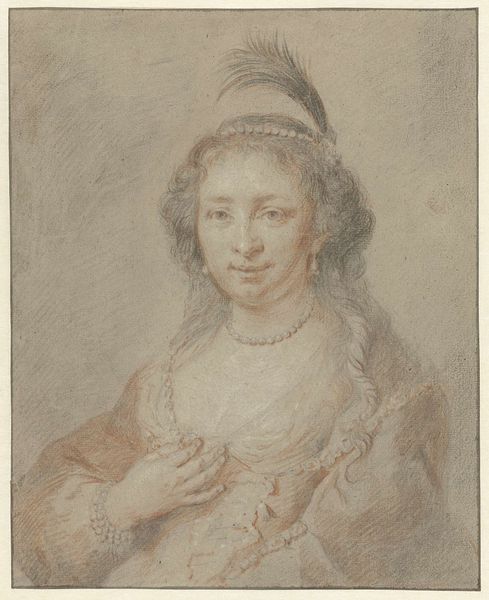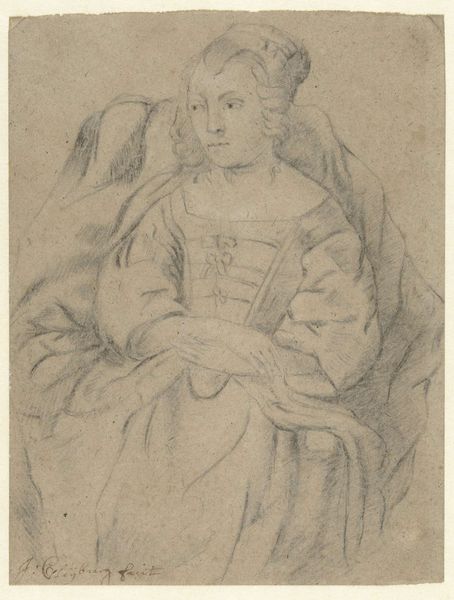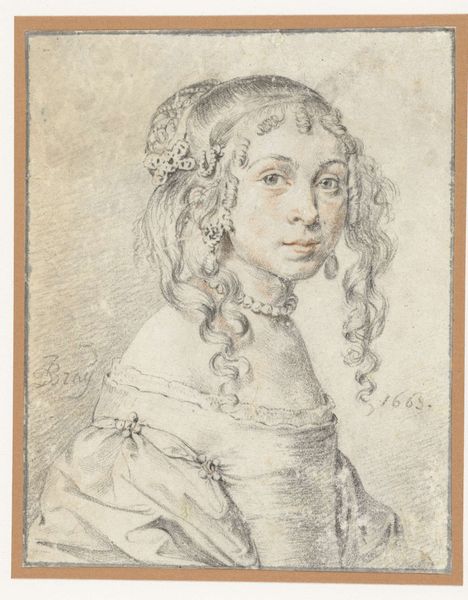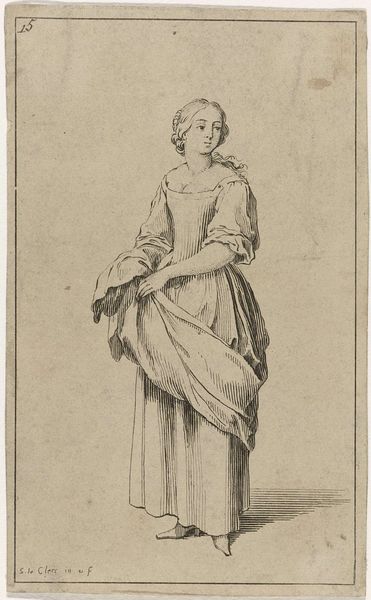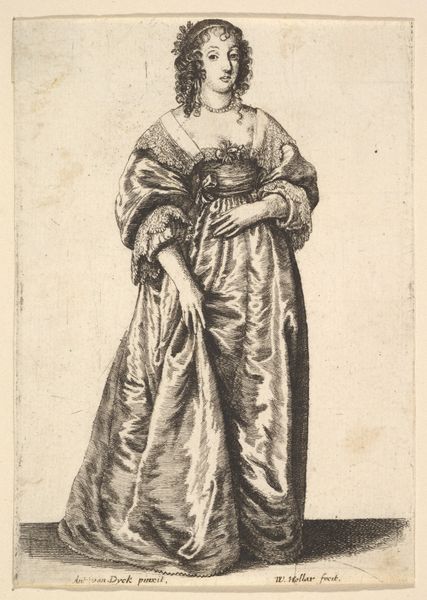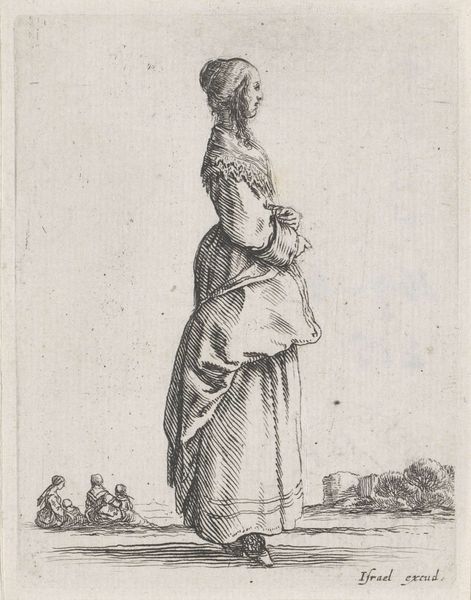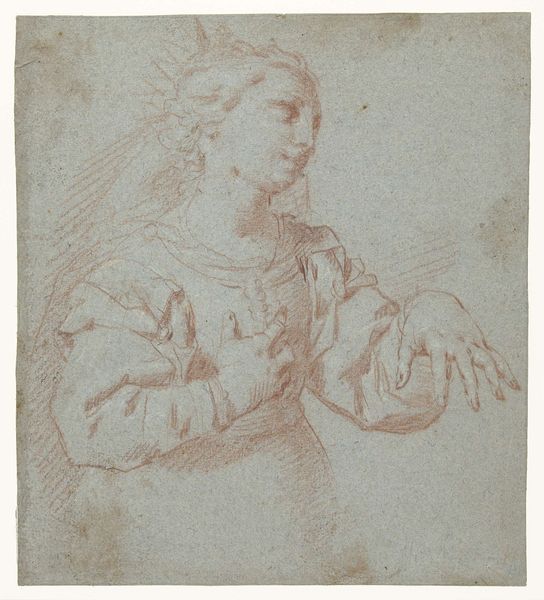
drawing, pencil
#
portrait
#
pencil drawn
#
drawing
#
baroque
#
dutch-golden-age
#
pencil sketch
#
figuration
#
pencil
#
genre-painting
#
academic-art
Dimensions: height 288 mm, width 191 mm
Copyright: Rijks Museum: Open Domain
Editor: Here we have Cornelis Saftleven’s "Zittende Vrouw," created in 1634. It’s a pencil drawing, and what strikes me is how the textures of the clothing, especially those ruffled sleeves, seem to dominate the composition. What's your take on this drawing? Curator: Well, let’s consider the materiality itself. It’s just pencil on paper, a relatively accessible and inexpensive medium, yet it’s rendering the sumptuousness of upper-class Dutch fashion. The labor invested in producing that garment – think of the spinning, weaving, tailoring – all that work is flattened, re-presented by Saftleven's comparatively quicker act of drawing. Editor: That’s a good point. So, you are saying that there is tension between the materials used and what those materials are depicting. Could it be interpreted as a commentary on the Dutch Golden Age, its class structure, maybe? Curator: Precisely. The availability of paper allowed for wider circulation of images, making luxurious styles like these accessible to a broader audience through drawings and prints, yet distanced from the real economic investment necessary for actual possession. Do you see any implications there? Editor: So, is this pencil drawing almost democratizing this woman’s likeness, even if the sitter remains in a completely different social sphere from the viewer? Curator: Absolutely. It brings the trappings of wealth to a different plane of consumption. The drawing itself becomes a commodity, a stand-in for real material wealth. Look closely: can we infer, perhaps, Saftleven's intentions from his particular handling of line and texture? What aspects does he emphasize or downplay, and how might this affect our reading of social dynamics? Editor: That’s fascinating. I never thought about it that way, but now I am really noticing how the ephemeral nature of the drawing is contrasted by the suggestion of elaborate attire. It definitely adds another layer of meaning. Thanks for sharing that insight. Curator: My pleasure! It's about questioning whose labor makes such imagery, such luxury, visible. Always look at the relationship between the art object and its socio-economic context.
Comments
No comments
Be the first to comment and join the conversation on the ultimate creative platform.
